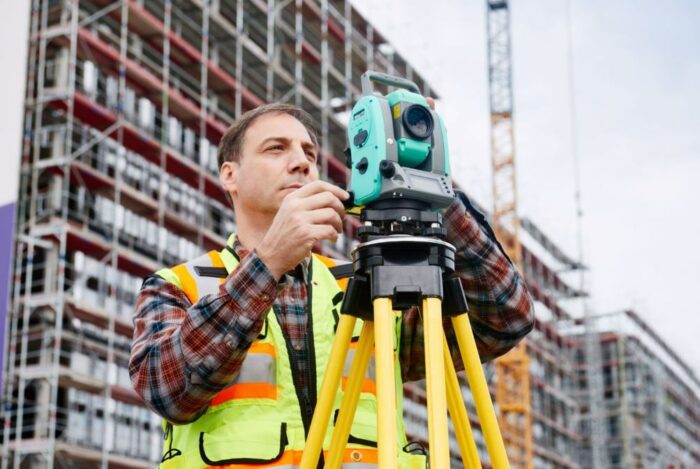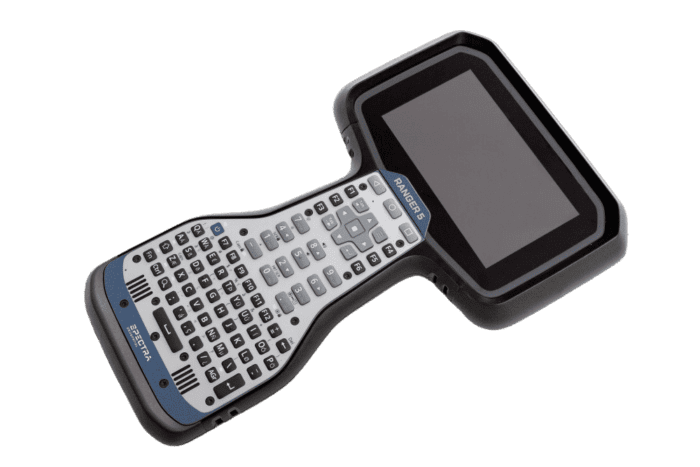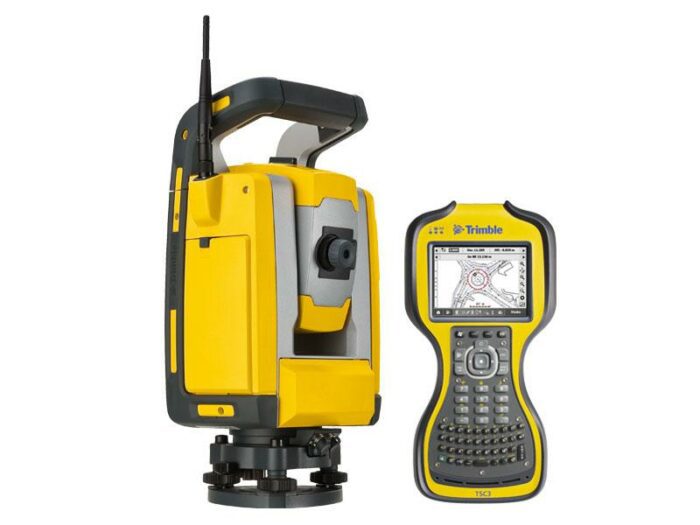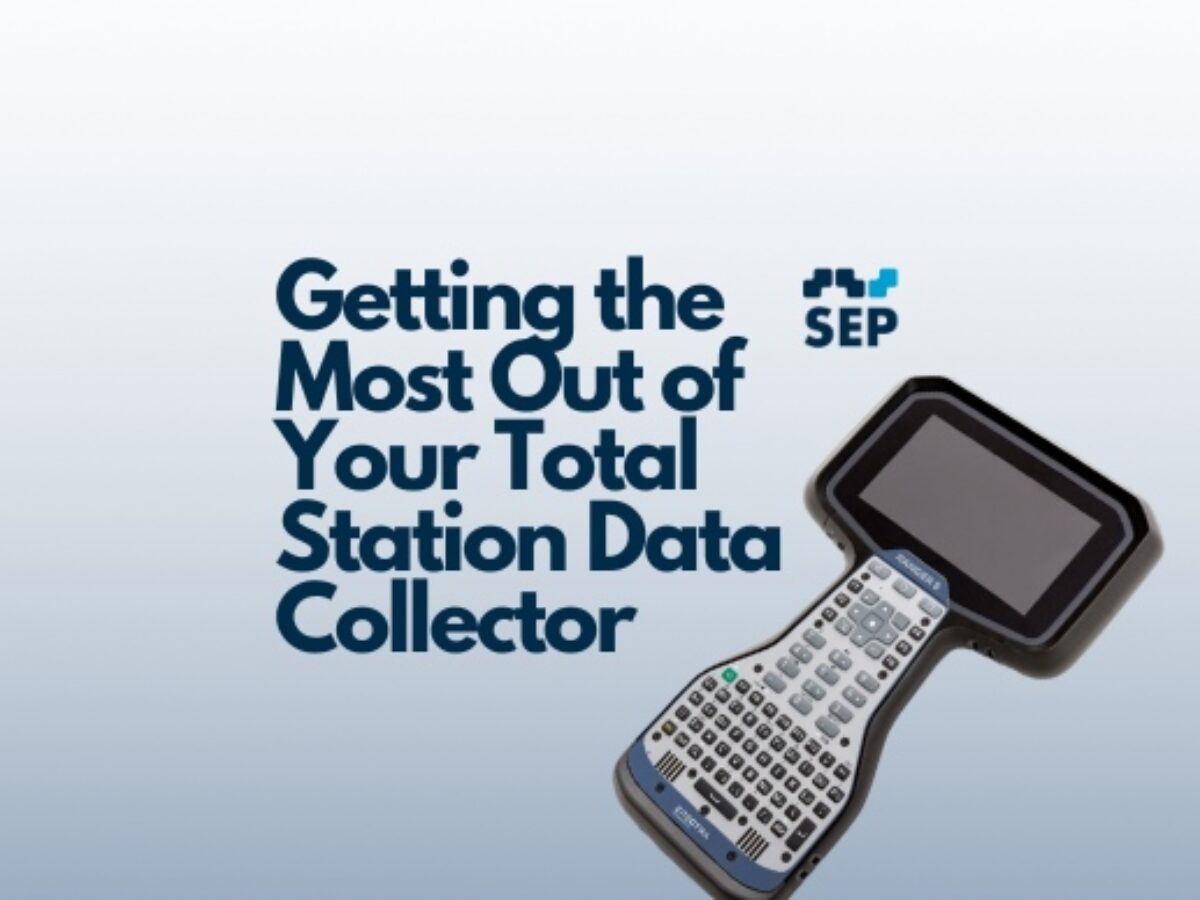Get the Most Out of Your Total Station Data Collector
Total Station Data Collectors serve as the backbone of modern surveying, transforming raw measurements into actionable insights that drive precision and efficiency in the field. These devices embody the convergence of cutting-edge technology and the age-old practice of land surveying.
At SEP, we have a range of Data Collectors available from industry-leading manufacturer Spectra. The premium quality of our service has enabled us to become a Spectra Authorised Service Partner as well as an authorised dealer of the global brand. It’s this partnership and expert knowledge that allows us to personalise our customer service and offer the best advice on Total Stations, Data Collectors and other Surveying Accessories.
In this blog, we’ll uncover the core functionality of Total Station Data Collectors, as well as offer five tips for getting the most out of this indispensable tool.

What is a Total Station Data Collector?
At the core of their functionality, Data Collectors act as the bridge between the surveyor and the total station itself. They seamlessly integrate measurement input, process data and offer a user-friendly interface, facilitating a streamlined workflow for surveying professionals. Let’s delve deeper into the essence of these indispensable tools and uncover the key aspects that make them the backbone of efficient surveying.
Integration of Measurements
Total Station Data Collectors play a pivotal role in consolidating and organising measurements collected by the total station. Whether it’s distances, angles, or other crucial surveying parameters, the data collector assimilates this raw information into a cohesive and comprehensible format, forming the foundation for subsequent analysis.
Real-time Data Processing
One of the defining features of Total Station Data Collectors is their ability to process data in real time. As measurements are captured in the field, the data collector swiftly crunches the numbers, providing instant feedback to surveyors. This real-time processing not only enhances efficiency but also empowers surveyors to make informed decisions on-site.
User-Friendly Interface
Designed with user experience in mind, these data collectors boast intuitive interfaces that simplify the complexities of surveying tasks. Surveyors can easily navigate through menus, input data, and execute commands, fostering a seamless interaction between the operator and the surveying instrument.
Storage and Retrieval of Survey Data
Total Station Data Collectors serve as digital vaults, storing vast amounts of survey data. This archival function not only ensures the preservation of valuable information but also enables surveyors to retrieve and review past data for reference, analysis, or comparison.
Connectivity and Compatibility
In the era of interconnected technologies, these tools exhibit robust connectivity features. Seamlessly integrating with total stations, GPS systems and other surveying instruments, fostering a cohesive ecosystem. This compatibility ensures that surveyors can leverage a range of tools and technologies to enhance the scope and precision of their surveying projects.
Now, armed with an understanding of the foundational role these tools play, let’s embark on a journey to uncover five invaluable tips that will unlock the full potential of Total Station Data Collectors. These tips will not only enhance the efficiency of your surveying endeavours but also elevate the quality and accuracy of the insights derived from your data.

SEP Tips for Using Total Station Data Collectors
If you want to unlock the full potential of your surveying equipment, it’s best to understand the functionality of these important tools. Below are just five tips for utilising your Total Station Data Collector.
-
Optimise Calibration
Calibration is the cornerstone of accurate measurements. Over time, factors such as wear and tear or environmental conditions can subtly impact the calibration of your data collector. Changes in temperature, humidity, or exposure to magnetic fields can introduce subtle variations. Always be cognizant of the surroundings, and if possible, calibrate in conditions that closely resemble the actual surveying environment.
Maintain a comprehensive record of your calibration activities. Document each calibration session, including the date, environmental conditions, and any adjustments made. This record not only serves as a reference for future calibrations but also aids in troubleshooting if you encounter any irregularities in your measurements.
Manufacturers invest extensive research and engineering into defining precise calibration processes for their instruments. Following these guidelines meticulously is paramount. It not only maintains the integrity of the device but also aligns with the manufacturer’s intended specifications, ensuring optimal performance.
Calibration isn’t a one-time affair either; it’s an ongoing process. Regularly monitor the performance of your data collector and be proactive in making adjustments. If you notice any deviations or inconsistencies, promptly address them through calibration. This proactive approach ensures that your device consistently delivers accurate measurements throughout its operational life, forming the bedrock of trustworthy survey data.
-
Master Data Input
Understand the various data input methods at your disposal, ranging from manual entry to leveraging advanced features like voice commands or barcode scanning. Familiarity with these methods empowers you to choose the most expedient approach based on the nature of your surveying task.
Time is of the essence in surveying, and employing shortcuts and templates can be a game-changer. Create custom shortcuts for frequently used commands or inputs to streamline your workflow. Templates, pre-configured with common parameters, allow you to initiate surveys swiftly without the need for repetitive data entry. These time-saving strategies not only enhance efficiency but also reduce the likelihood of errors associated with manual input.
Establish standardised conventions for naming, labelling, and categorising your data. Whether it’s point IDs, project names, or specific attributes, adhering to a consistent format ensures that your data is easily interpretable and facilitates comprehensive analysis. Implementing this practice from the outset of your surveying project minimises discrepancies and enhances the overall accuracy of your collected data.
-
Stay Updated
No software is immune to bugs, and manufacturers continually strive to identify and rectify any issues through updates. By keeping your data collector’s software up to date, you benefit from bug fixes that address potential glitches, ensuring the stability and reliability of your device.
Keep your data collector’s software up to date for access to the latest features and improvements. Software updates aren’t just about fixing bugs; they often introduce new and advanced features that can revolutionise your surveying experience. By keeping your data collector’s software current, you unlock access to the latest functionalities and capabilities. This ensures that your device evolves alongside the rapid advancements in surveying technology, empowering you with state-of-the-art tools for enhanced productivity.
Surveying technology is a dynamic landscape, with new tools and technologies frequently emerging. Keeping your data collector’s software up to date ensures compatibility with these innovations. Whether it’s integration with new total station models, advancements in data transfer protocols, or compatibility with other surveying instruments, staying current guarantees a seamless and interconnected surveying ecosystem.
In addition to software updates, firmware updates are critical for optimal performance. Firmware is the embedded software that controls the essential functions of your data collector. Regularly checking for firmware updates and installing them is paramount for ensuring the efficient operation of your device, as these updates address hardware-level optimisations and compatibility issues.
By embracing the latest software and firmware updates, you not only enhance the technical capabilities of your data collector but also enjoy a more streamlined and user-friendly experience. Manufacturers often refine user interfaces, introduce intuitive navigation features, and implement user-centric enhancements that contribute to an overall improved surveying experience.
-
Backup and Security Measures
The foundation of data security often begins with access control. Password protection serves as the first line of defence against unauthorised access to your survey data. Establish strong, unique passwords for your Total Station Data Collector and associated software. Regularly update these passwords and restrict access to authorised personnel only. This practice not only protects your data from potential breaches but also ensures that your surveying projects remain confidential and in the hands of trusted individuals.
Utilise encryption features to scramble your data in a way that makes it indecipherable without the appropriate decryption key. This adds an extra layer of protection, especially when data is in transit or stored on external devices.
Human error remains a significant factor in data security incidents. Educate personnel involved in surveying projects about security best practices. Emphasise the importance of password hygiene, the secure handling of data, and the adherence to established security protocols. By fostering a culture of awareness, you empower your team to actively contribute to the overall security posture of your surveying operations.
-
Training and Continuous Learning
In the same vein, it’s best to invest time in training sessions to explore advanced features and stay updated on industry best practices for using data collectors effectively. Whether it’s mastering complex surveying techniques, exploring automation capabilities, or understanding nuanced data processing features, training sessions provide a structured platform for in-depth learning. This knowledge not only broadens your skill set but also empowers you to leverage the full spectrum of your data collector’s capabilities in diverse surveying scenarios.
Online platforms, forums, and user communities dedicated to surveying and data collector technologies serve as virtual knowledge hubs. Engaging with these communities opens avenues for exchanging insights, gaining practical tips, and troubleshooting challenges. The collective wisdom of a diverse user base provides a wealth of real-world experiences and solutions, enriching your understanding and proficiency in using data collectors effectively.
A well-utilised Data Collector can significantly enhance the efficiency and accuracy of your surveying projects. Whether it’s staying on top of industry innovations or encrypting your work, implement these tips to ensure you’re making the most out of this essential tool.

What Data Collectors do SEP supply?
We currently stock the TSC5 and TSC7, available to buy or to hire. Not only do we stock brand-new Data Collectors, but we also have a range of Used Survey Equipment on offer. This includes a Spectra Total Station with Controller included and Trimble Data Collectors. Alternatively, we have a wide range of Survey Equipment for Hire.
If you’re not sure what Data Collector you need for the job or want to learn more about payment options, feel free to speak to us and we’ll provide tailored advice based on your requirements.
SEP Specialists in Survey Equipment
SEP takes pride in offering a range of Data Collectors sourced from the esteemed manufacturer Spectra, a global leader renowned for pioneering advancements in surveying technology. Our commitment to providing top-notch service has not only established us as a Spectra Authorised Service Partner but also as an authorised dealer of this prestigious global brand.
This affiliation empowers us with an unparalleled depth of expertise and insight into Spectra’s product range. We leverage this specialised knowledge to personalise our customer service, offering tailored advice that caters specifically to the unique needs and preferences of our clients.
For more in-depth insights and to explore the latest advancements in surveying technology, visit our blog or reach out to our experts. Your next survey could be your most efficient one yet!
